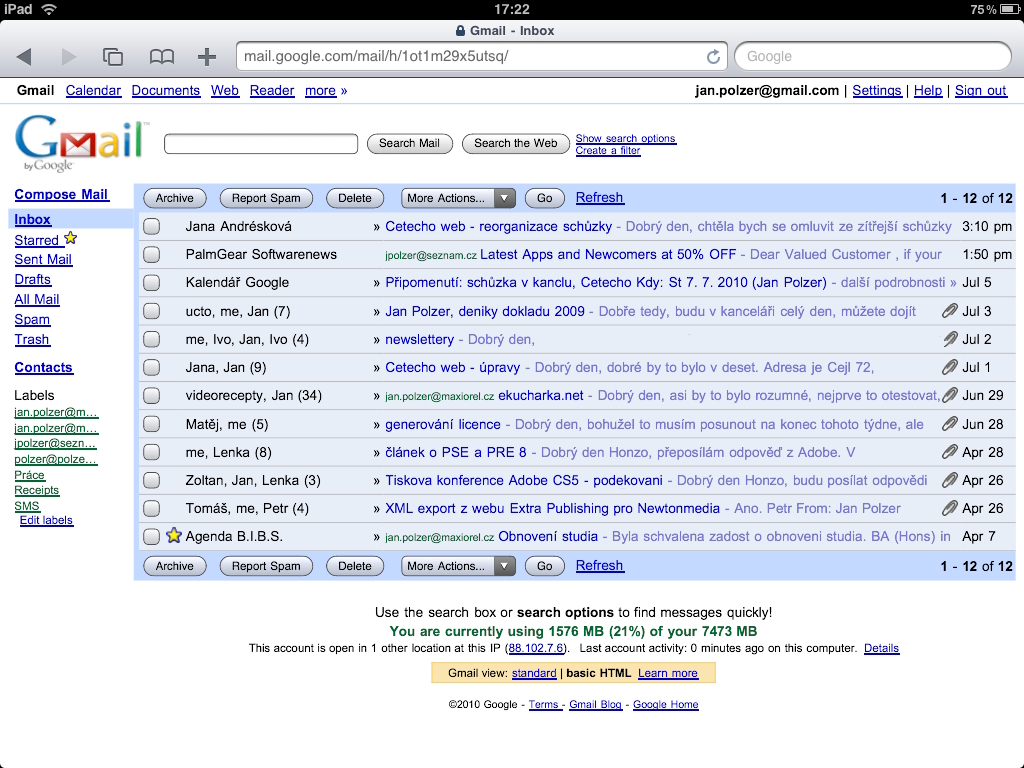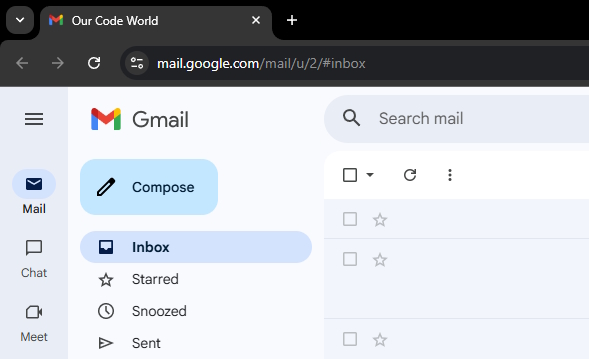I've been using Gmail a lot lately, and something came to my mind while using it, as I have at least 3 Gmail accounts for different purposes. Have you ever noticed that mysterious little number in your Gmail URL, something like /u/1/ or /u/2/, and wondered what secret it hides? It's not just a random code. Behind that tiny fragment lies a clever engineering solution that allows Google to juggle multiple identities seamlessly within a single browser. What looks like a small URL tweak is actually a masterclass in session management, usability, and design simplicity.
In this article, I'll unravel why Google uses the /u/number/ structure, how it works under the hood, and what it reveals about the challenges of building systems for billions of users who live multiple digital lives at once.
What does the number mean
Whenever you log into multiple Google accounts at once in the same device (for example, one personal and one work Gmail account), Google assigns each session an index number:
- /u/0/: your first logged-in Google account (the default one)
- /u/1/: your second account
- /u/2/: your third logged-in account
and so on, the index will increase according to the number of accounts that you have in the same device.
Is this a common pattern in software development?
This recognized pattern is called context isolation or session scoping, which is a design pattern used in web applications to separate or isolate different user sessions, environments, or contexts within the same system, so they don't interfere with each other. It's basically how software keeps one user's stuff from mixing with another's, even when both are active in the same app or browser.
Context isolation matters because it keeps your digital life clean, secure, and hassle-free. From a security standpoint, it ensures that one account's data stays sealed off from another; your work email, for instance, can't peek into your personal Drive. It also provides stability, preventing mix-ups or errors when multiple sessions run side by side. That’s why Gmail always knows which inbox to show, even if you have five open tabs. And finally, it enhances the user experience, letting you stay logged into all your accounts at once and switch between them effortlessly.
Google is not the only one using this approach
Many large-scale apps use similar scoping patterns:
- Slack: workspace-name/ to separate teams.
- AWS Management Console: uses account or role context switching.
- GitHub: allows multiple organizations with scoped URLs or tokens.
- Atlassian products: use site.atlassian.net subdomains to isolate tenants.
In all cases, the core idea is: multiple identities, same domain and zero conflicts.
A little bit of history
Back in the early days of Gmail think mid-to-late 2000s — life with multiple Google accounts was messy. If you had both a personal Gmail and a work Gmail, you couldn’t be signed into both at once in the same browser. The moment you logged into another account, Google would automatically sign you out of the first one.
That meant endless cycles of logging in, logging out, and double-checking you were in the right inbox before sending an email. Many people got around it by opening different browsers (one for personal, one for work) or using incognito windows, basically, a clunky workaround:

Then, around 2010, Google introduced multiple sign-in support, a small feature with a massive impact. It allowed users to stay signed into several Google accounts simultaneously within the same browser session. To make this possible, Google engineers had to figure out how to keep each session separate while still serving everything from the same domain, google.com.
Over time, this pattern spread across all major Google services, Drive, Calendar, Docs and YouTube, creating a unified way to manage multiple Google identities at once. Today, we barely notice it, but that tiny “/u/0” in your Gmail URL is a leftover trace of one of Google’s smartest usability upgrades ever.
Bottom line
So next time you see that little /u/2/ (or /u/7/ if you're really juggling accounts), you'll know it's not just a random number, it’s Google’s clever way of keeping your digital lives organized. A small detail, sure, but one that quietly makes switching between your personal, work, and secret meme accounts effortless. Sometimes, the coolest tech magic hides right there in the URL bar.









